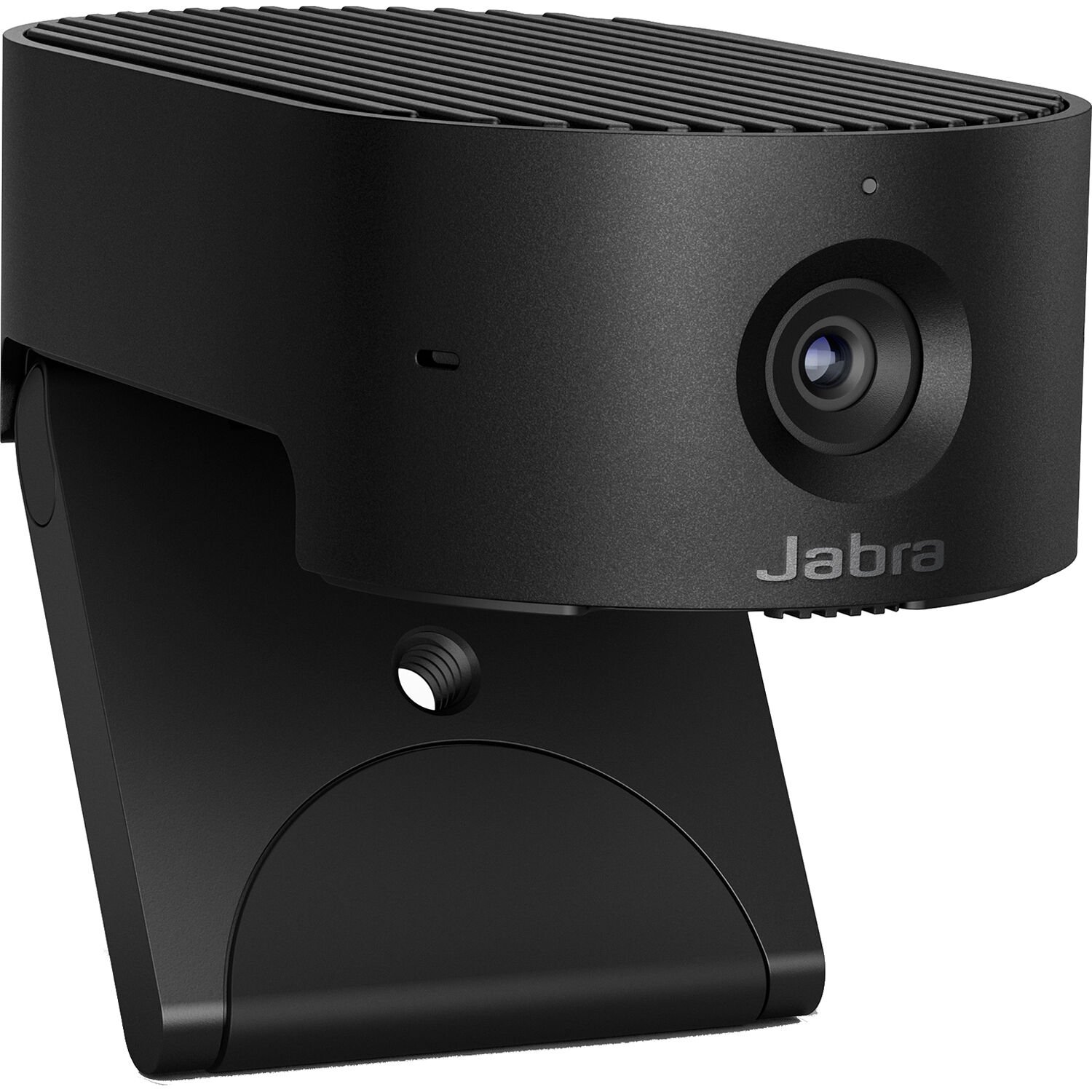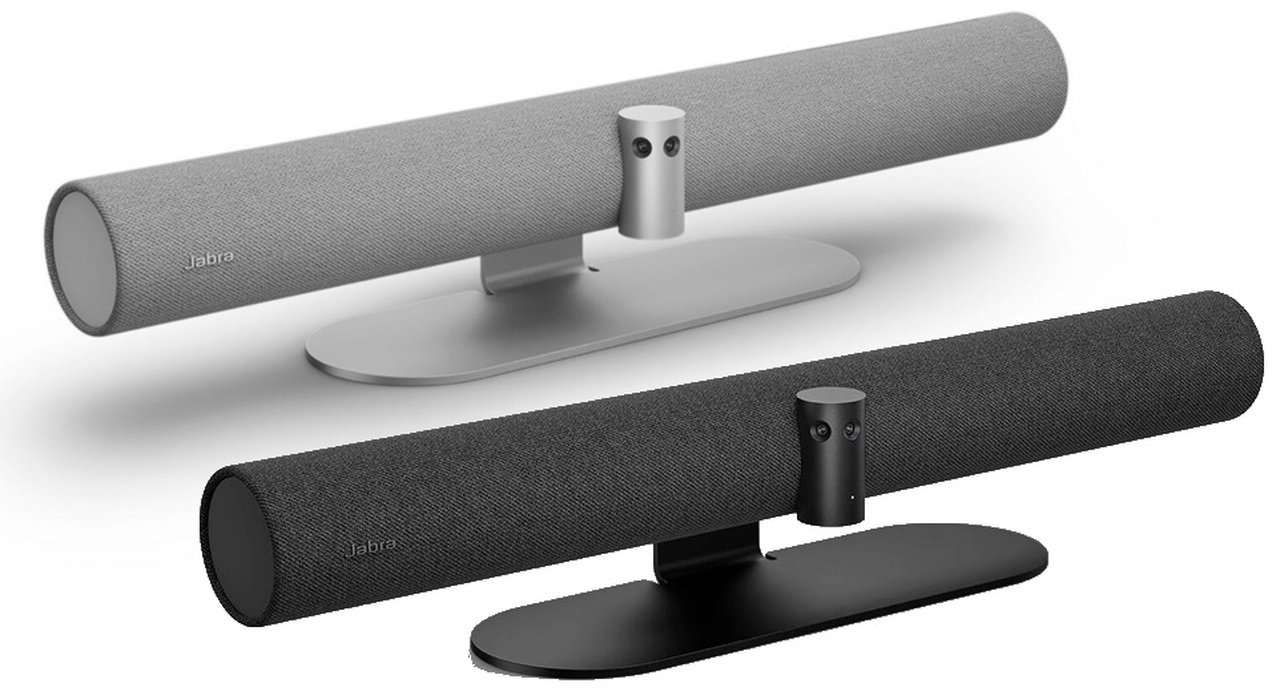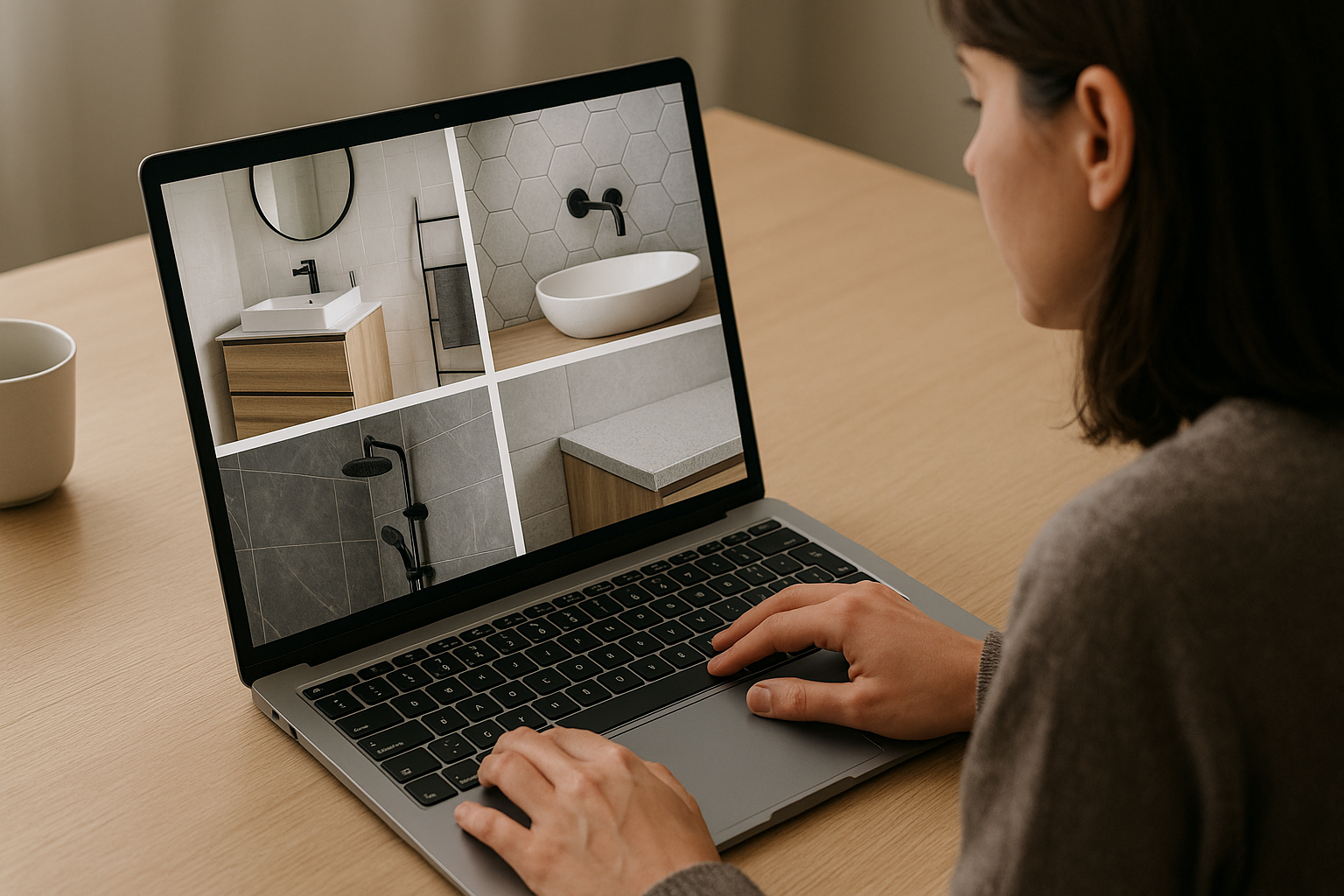Hybrid Work - The Future Is Already Here
Last week Setup hosted a breakfast for some of our VIPs - brand-side marketers who have worked with us on multiple occasions to hire marketing agencies.
During the breakfast, we discussed the new reality born out of the COVID pandemic: most white-collar workers are now, and will be in the future, finding themselves in a hybrid work environment.
Many employers are not (and will not) demand workers to be in-person in the office five days a week. That means that there are days when employees work from a home office, coffee shop, co-working space, or some other remote location. Connecting with coworkers through video and audio will only continue to grow.
One of the members of our group happens to be the head of product and business management for Jabra, which is a 150-year-old company (originally Great Northern Telegraph Company) that has been on the cutting edge of building technology that supports human connection and communication. He provided us with some products to check out.
Jabra and other electronics manufacturers have been very thoughtful to solve some of the challenges that make hybrid work difficult. Highlighted below are two of the major issues that arise from a hybrid work environment and cause misconceptions and false opinions: poor framing and low fidelity.
Challenge #1 - Poor Video Framing
Our breakfast conversation turned to some aspects many of us had not considered. For example, when some members of a team are in-person and some are off-site, typically teams use Zoom, Google Meet, Microsoft Teams, or something similar to connect. Most conference room cameras are set up so that the people sitting near the camera are quite large on-screen and people sitting far from the camera are smaller.
Psychologically those who are remote tend to assign higher prominence to those who appear bigger causing an inequity for those who appear smaller. Jabra solves this with a few of its higher-end systems by leveraging multiple lenses, the camera uses AI to readjust the focus to distribute the in-person attendees equally within the frame of view. One of the even higher-end cameras puts each in-person attendee in a “box” (actually called Dynamic Composition) so that they have equal footing with online participants - democratizing the participation for all.

Challenge #2 - Low Audio/Video Fidelity
Another aspect of great online meetings is fidelity - both auditory and visual. When we host an online meeting with poor quality video or sound, it does not just make for a rough time hearing or seeing the participant, it actually leaves other attendees assigning less credibility to the person. Bad fish-eye cameras or ones that are grainy cause the other participants to discount the opinions of the person as if lesser quality equipment equates to less quality ideas. Also, poor audio quality makes it difficult for others to hear what someone is saying. Again, Jabra has a solution for this. Several of their headsets are designed to drown out background noise like coffee shops with microphones that isolate the participant’s voice.

Several of Jabra’s products have dual purposes - for example, many of the earbuds are fantastic for conference calls, but they also work great for listening to music while exercising or blocking out noisy seat-mates on a long flight.
This video from Jabra does a good job of showing some of the different scenarios which play off their line: We engineer technology that makes life look and sound better:
This post is not an advertisement for Jabra - we are just big fans. And, if your company is looking to stay remote, it may be a worthy investment to make the hybrid experience as fair and seamless as possible for your team.
You can learn much more about hybrid work in this extensive report that Jabra published in 2021.
Over the past year, we’ve watched the following patterns emerge across seemingly unrelated sectors: rising consumer expectations, demand for authenticity, growing complexity, and the tension between automation and human connection.
We interviewed multiple marketers from an array of industries in our blogs below, and we discovered consistent trends across the board. Check out all of our industry blogs throughout 2025 from leaders at Blackbaud, Hiscox USA, Mimedx, MONPURE, Kimberly-Clark Professional, and more.
A call for marketers and agencies to participate in the 2025 Marketing Relationship Survey, before it’s too late.
On November 19, 2025, Atlanta’s vibrant marketing community united under one roof for the first-ever Atlanta Integrated Marketing Summit (AIMS) — a remarkable experience that turned inspiration into action, focused on meaningful connections, and highlighted incredible leaders from UPS, Kellanova, Edible Brands, and Papa Johns who are actively pushing the industry forward.
Explore the denim duel between AE’s Sydney Sweeney campaign and Gap’s Milkshake-fueled comeback—and what marketers can learn.
Most agency searches begin with urgency: a priority shift, a launch date appears, and suddenly, you’re writing an RFP at midnight. In that scramble, you invite too many firms, ask the wrong questions, and end up choosing based on pitch theater instead of day-to-day fit. The fix isn’t a better RFP template. It’s time - specifically, the time you spend getting to know agencies before you need one.
Marketers are grappling with how to make their strategy feel more impactful and human in 2025, but in the nonprofit world, that challenge comes with the added pressure of limited budgets and expansive missions. For Lynn Godfrey, Chief Experience Officer at Blood Cancer United, the solution lies in staying intentional, deeply segmenting audiences, and adapting quickly in a constantly evolving landscape.
Private wealth marketing is built on personal relationships, which can make the advancements in technology more and more challenging. In an industry where discretion and relationships reign supreme, marketers must learn how to integrate data, automation, and innovation without losing trust.
To explore this balance, we spoke with Cathy McLagan, Managing Director of Growth Enablement at CIBC Private Wealth US.
Joe Koufman, the Founder and CEO of Setup, explains the benefit of reviving the Atlanta Integrated Marketing System (AIMS). Bringing AIMS back to Atlanta is a chance to unite our community, foster new connections, and share practical insights from across the spectrum. Read about how AIMS benefits the Atlanta marketing community:
“Data-driven” marketing is about proactively leveraging insights to make strategic decisions. But what defines a truly data-driven media approach?
If your media strategy feels tangled and unclear, you’re not alone. Here’s how smart brands are simplifying the chaos and getting real results.
Whether you’re managing campaigns for a national brand, a franchise QSR, or a B2B tech company, the challenge is the same: how do you build smarter media strategies that actually tie back to real business outcomes? We spoke with top experts from Sagepath, Goodway Group, and Look Listen to dig into what’s working, what’s changing, and where media performance and analytics are headed next.
On a bright August morning in Atlanta, marketers from across the city from brands like Hiscox, Coca-Cola, Church’s Chicken, and more gathered for Setup’s latest #MarketersBreakfast, ready to explore a topic on everyone’s mind: How can AI truly enhance, rather than replace, human creativity?
Over coffee and conversation, attendees rolled up their sleeves for a hands-on, interactive session led by Aby Varma, the Founder of Spark Novus.
Retail marketing is entering a new era where value, trust, and operational excellence matter more than volume, visibility, and trend-chasing. As shopper expectations evolve, smart retail marketers are embracing personalization, AI, and brand positioning that aligns with customer values. We spoke with Kaylin Staub, the Chief Marketing Officer at SupplyHouse, and a leader we believe to be leading the pack in these efforts. Check out her interview.
In the midst of change and new tech, Marti Walsh, VP of Customer Experience and Marketing at Kimberly-Clark Professional, brings us back to what really matters: showing up with purpose. In this conversation with Setup, she shares how her team builds trust through consistent omnichannel messaging, thoughtful use of AI, and a commitment to authenticity that connects with real people.
Media is about delivering results that are meaningful. Your strategy should be about more than impressions. But with siloed data and rising expectations, it's hard to prioritize meaning under pressure to perform.
That’s why we’ve brought together three powerful blogs filled with insights from industry experts at the top of their media game to help you rethink your media planning, simplify execution, and activate smarter strategies that drive growth.
“Data-driven” marketing is about proactively leveraging insights to make strategic decisions. But what defines a truly data-driven media approach?
Creating a marketing budget isn’t just a financial exercise; it’s a strategic act. It’s your roadmap for growth, your guardrail against wasted effort, and, when done well, your strongest case for internal alignment and external results.
But while most marketers know how much they wish they could spend, far fewer know how much they should. So, where do you begin?
Marketers today juggle numerous platforms, overwhelming data, and competing internal demands, creating a complex media landscape that clouds performance clarity. What drives this complexity, and how can brands effectively navigate it?
Today’s marketers face immense pressure to justify media spend and measure tangible impact. But fragmented data, inadequate tracking, and unclear KPIs often cloud visibility. How can brands build smarter strategies that truly connect media spend to real business outcomes?
At Setup, we don’t just listen, we track patterns, analyze them, and come up with solutions to assist marketers with their challenges. Every year, our Marketing Relationship Survey gathers insights from brand and agency marketers to identify the core challenges, shifts, and opportunities in the client–agency relationship. These aren’t hypotheticals; they’re real-time questions marketing leaders are actively asking. And your answers help drive the industry's evolution.
Every few years, we revisit the Health and Wellness space to track major shifts. Since the pandemic, the industry has made significant strides to meet evolving consumer demands and expectations.
We spoke with Mark Yosick, Senior Marketing Director, Surgical at MIMEDX, about his experience in the space, the challenges he’s faced, and the trends he sees shaping the future.
In the last five years, the health and wellness industry has experienced a significant transformation, from personalized nutrition, to the rise of telehealth, to a growing emphasis on marketing transparency. The consumer is becoming more integral in everyday decisions across all industries.
What has changed and what is continuing to take priority in today’s health and wellness sector?
Setup CEO + Founder, Joe Koufman, sat down with Navin Sharma, Chief Marketing Officer at Church’s Texas Chicken, to talk about the importance of hard work, resilience, and why simply getting started is often the most imperative step to success.
When it comes to purchasing, today’s consumers want more than just a product–they want something to believe in. The rise of purpose-driven brands, founder visibility, AI-powered personalization (with boundaries), and culturally rooted storytelling are reshaping how beverage companies connect with their audiences.
BLK & Bold, a coffee brand built on community, culture, and impact, is a leader in this movement. In this exclusive interview with Co-Founder Rod Johnson, Johnson shares how they’re redefining what it means to market in the beverage space.
At Setup, we work with some of the finest marketing agencies across the nation–each with a unique set of capabilities. Our most recent virtual event gave our partners a platform to share an exclusive behind-the-scenes look into their process, strategy, and campaign results for an array of industries in under two hours. Ten case studies in 90 minutes and a little friendly competition.
In a conversation with Nate Bigger, Founder + CEO of MONPURE and the leader behind the brand’s marketing strategy, we heard firsthand how the company is navigating the beauty landscape with authenticity, science-led storytelling, and a deep understanding of the emotional side of self-care.
We’ve analyzed ten years of data to uncover the five biggest challenges agencies face when it comes to pitching, and how they can put their best foot forward to present themselves thoroughly and honestly, and win the client.
Setup CEO + Founder, Joe Koufman, spoke with Joshua Sims Sr., the Chief Marketing Officer at Noble Food and Pursuits about how he prioritizes relationships and embodies the humanization of marketing.






























Joe Koufman, author of The Connector’s Compass and Founder + CEO of Setup, shares his passion behind relationship building and why he wrote a book centered around people pursuing more meaningful connections.